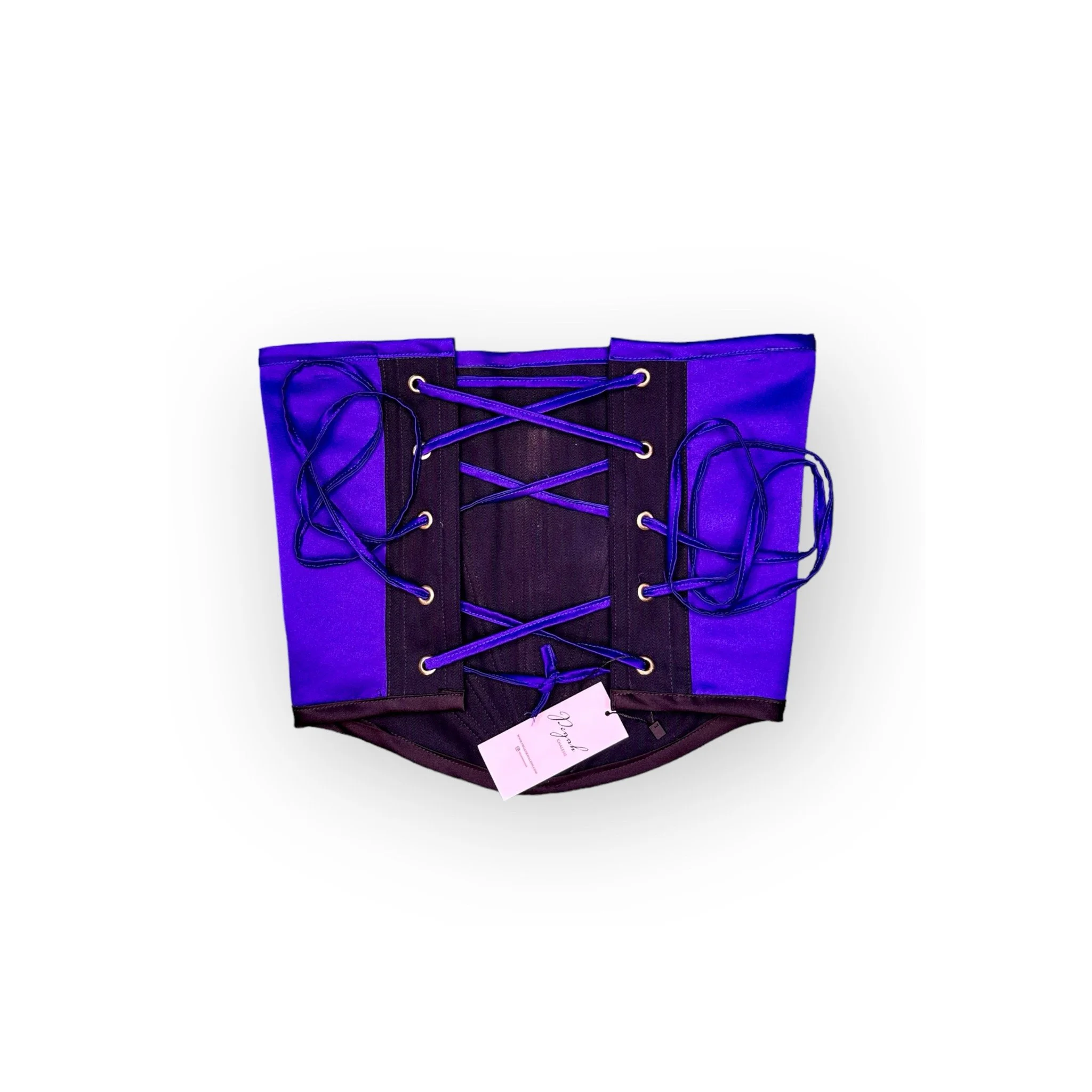Our corsets are all lined with Coutil. Benefits of such fabrics are what makes our corsets different than others. All corsets are Handmade in California insuring the quality and timeless piece is our gift to you. All fabrics are handpicked and purchased from top fabric manufacturers in the world to ensure uniqueness of each piece.
What makes us different:
Coutil is highly valued in corset making due to its unique properties that contribute to the durability, comfort, and effectiveness of corsets. Here are the key benefits of using coutil in corsetry:
Strength and Durability: Coutil is a densely woven fabric that provides exceptional strength, making it ideal for withstanding the tension and pressure exerted by a corset. It resists stretching, which helps maintain the corset's shape and structural integrity over time.
Shape Retention: The non-stretch nature of coutil ensures that the corset holds its intended shape, providing consistent support and achieving the desired silhouette. This is particularly important in waist training and body shaping.
Breathability: Despite its strength, coutil is breathable, allowing for air circulation. This helps keep the wearer comfortable, even when the corset is worn for extended periods.
Smooth Finish: Coutil has a smooth surface that can be easily sewn and shaped, allowing for precise construction of seams and edges. This results in a polished, professional look in the finished corset.
Reduced Bulk: Coutil is relatively thin but strong, which means it adds minimal bulk to the corset. This allows for a sleek, smooth appearance under clothing without compromising support.
Versatility in Design: Available in various colors and patterns, coutil can be used both as a structural layer and as a fashion fabric, allowing corset makers to create both functional and aesthetically pleasing designs.
Prevents Warping: The tight weave of coutil prevents the fabric from warping or shifting, ensuring that the corset remains firm and stable, even with regular use.
These properties make coutil the fabric of choice for both historical and modern corsetry, ensuring that the garments are both effective in shaping the body and comfortable to wear.
CORSET CARE INSTRUCTIONS
Caring for corsets properly helps them maintain their structure and longevity. Here are some key tips:
1. Spot Clean Only: Corsets should never be fully submerged in water or machine washed. Use a damp cloth and mild detergent to clean the outer fabric. Focus on stained or soiled areas.
2. Avoid Over-Washing: Corsets don’t need frequent cleaning. Wearing a liner or a thin top underneath can help reduce the need to clean them too often.
3. Air Dry: After spot cleaning or general wear, allow your corset to air out. Hang it in a well-ventilated area, away from direct sunlight or heat, to prevent shrinkage or damage to the fabric and boning.
4. Storage: Store corsets flat or hang them up with proper support to avoid bending or warping. You can use padded hangers or lay them in a drawer, neatly folded. Avoid keeping them in tight spaces where the boning can be misshapen.
5. Lacing Care: Check your corset laces regularly for wear and tear. If they become frayed or damaged, replace them to ensure the fit remains secure.
6. Handling the Boning: Be mindful of the corset boning, whether it’s steel or plastic. Avoid bending or folding the corset unnaturally, as this can damage the boning and affect the corset’s shape.
7. Rotation: If you wear corsets regularly, rotate between several to allow each one to rest and regain its shape between wears.
By following these tips, you can ensure your corsets stay in good condition and maintain their structure over time.


